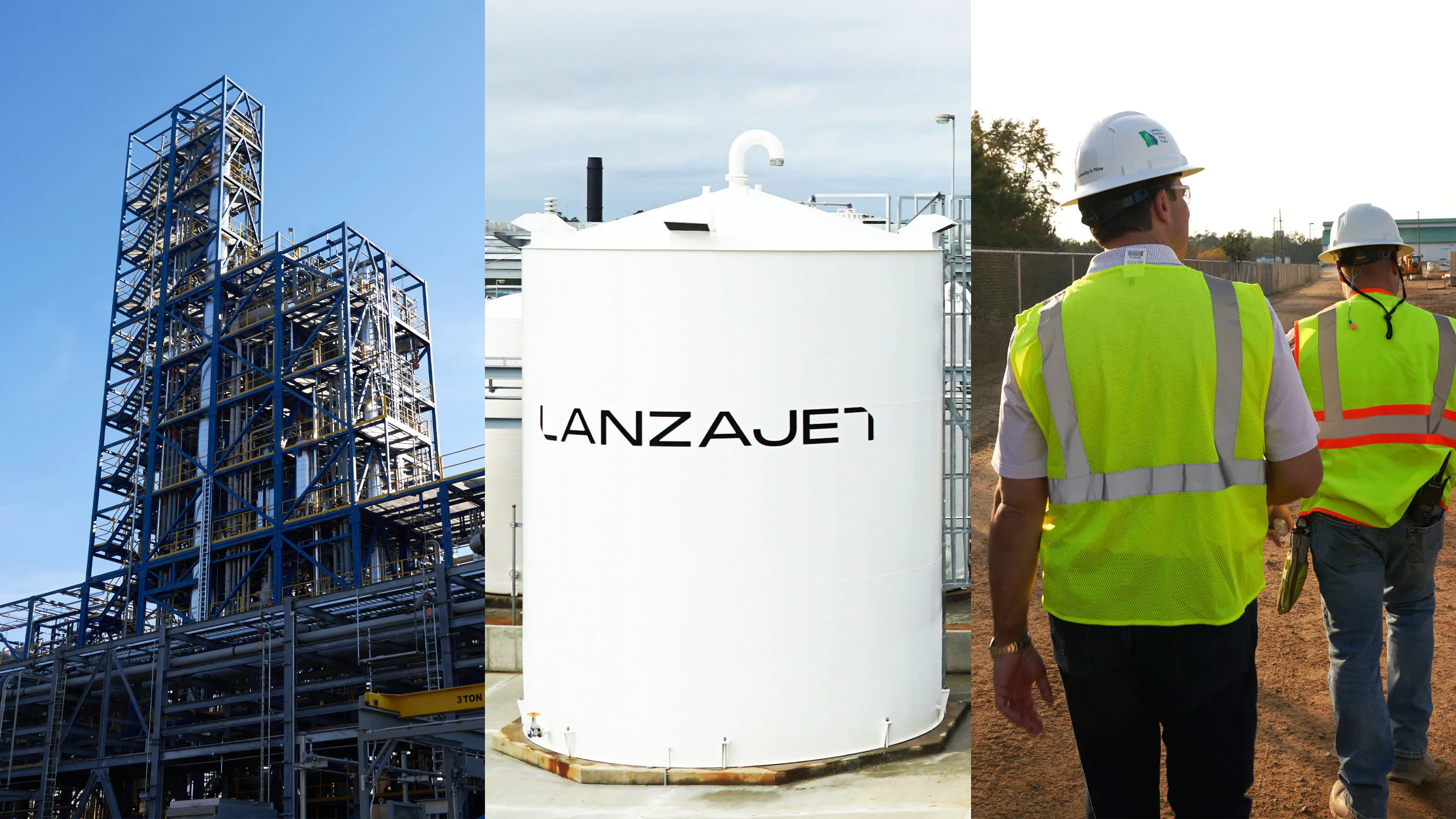Copyright Fast Company

A first-of-its-kind refinery has been in the works for a decade and half. Set to be completed this year, the facility is design to produce climate-friendly jet fuel, a material in increasing demand in response to climate commitments and regulations around the world. The refinery—called the Freedom Pines Fuels—was designed to showcase new methods of producing the fuel, and was receiving government support to help clean up air travel. Now, a year behind schedule due to a hurricane and equipment glitches, the project hit another roadblock this summer, when a major shift in U.S. energy policy under the new administration threw a wrench into the business model. It’s now a story of a company quickly adapting under pressure, and an illustration of the challenges—and continued opportunity—of clean energy in a more hostile political environment. The goal of the company behind the project, Illinois-based LanzaJet, is to produce a close facsimile of the kerosene-based fuel that powers jets and many helicopters and propeller planes today—without using petroleum. Instead, the Freedom Pines Fuels plant in the forest hamlet of Soperton, Georgia, will use ethanol to make what’s known as sustainable aviation fuel, or SAF. LanzaJet was ready to start with ethanol made from Brazilian sugarcane, until a new U.S. law forced a quick shift to midwestern corn. The fuels that make modern travel possible—kerosene, gasoline, and diesel—are typically refined from crude oil, rich in hydrocarbon molecules that release copious energy when burned. But burning them also inundates the atmosphere with heat-trapping carbon dioxide. SAF is essentially lab-grown jet fuel, made from carbon already in the environment, rather than pumped up from oil wells. It’s a tweaked formulation—for instance, with less sulfur—designed to burn cleaner. Sugarcane and corn are two of many possible carbon sources, along with cornstalks, twigs, vegetable oil, factory exhaust, and even garbage. The CO2 released by making and burning SAF should, in theory, be offset by the carbon captured to make more SAF, forming a closed loop. The Freedom Pines Fuels plant is a mini version of a typical refinery, slated to produce nine million gallons of SAF and a million of green diesel fuel in its first year. (A standard crude-oil refinery could churn a billion or more gallons of fuels.) But the Georgia plant is meant to be big enough to show the technology can work at scale. “Most process technology companies . . . almost never build plants of this magnitude,” says Jimmy Samartzis, a climate-focused airline industry veteran who became CEO when LanzaJet was founded in 2020. “It’s expensive, it’s big. But we thought and felt—accurately, looking back on it today—it was the right move to make.” Before the 2024 election, the federal government was also promising generous financial support for Freedom Pines. A Potential Market Boom LanzaJet is backed by companies that are counting on, or stand to benefit from, the shift to carbon-neutral jet fuel, including All Nippon Airways, British Airways, Southwest Airlines, and plane maker Airbus. The UN’s International Civil Aviation Organization (ICAO) has committed the industry to net-zero carbon emissions by 2050. In addition, laws and regulations, such as in Singapore, the U.K., and the European Union, have started requiring airlines or suppliers to blend SAF into the jet fuel supply, beginning at around 1–2%, then ramping up in later years. More such requirements are in the works in India, Indonesia, and Japan. The European Union is by far the most ambitious. From a mere 2% SAF blend required today, quotas rise steeply about every five years, hitting 70% in 2050. There’s further demand from companies, such as LanzaJet backer Microsoft, striving to meet aggressive greenhouse gas reduction goals. In addition to reducing its own footprint, Microsoft has announced plans to buy “SAF Certificates,” which subsidize the cost of the fuel to boost its usage. SAF has a long way to go in making a dent. It will account for just 0.7% of all jet fuel in 2025, according to the International Air Transport Association. “Obviously, if you look at the size of the overall aviation fuel space, in theory the [SAF] market is potentially huge for those that can offer a product at a competitive price,” says John MacDonagh, senior research analyst at capital markets research firm PitchBook. LanzaJet has raised “approximately” $400 million, according to Samartzis, from these companies and other backers, including energy producers Shell and Suncor, the U.S. Department of Energy, airport operator Groupe ADP, and Bill Gates’s Breakthrough Energy fund. Another backer is LanzaTech. Founded in Auckland, New Zealand, in 2005, it relocated its headquarters to Skokie, Illinois, in 2014. The company has engineered microbes to convert waste such as carbon monoxide and dioxide from factories into ethanol, as another route to carbon-neutral fuel and other chemicals. In 2010, LanzaTech and the U.S. Department of Energy started collaborating on technology to transform ethanol into jet fuel. In 2020, LanzaTech spun out LanzaJet as a new company to continue the work. LanzaJet is dipping a toe into the SAF market with Freedom Pines, with plans to build more plants, such as a collaboration with British Airways to open a facility in the U.K. by 2028. LanzaJet has also announced partnerships in India, Japan, and Kazakhstan to build additional facilities. But as it continues to announce expansion overseas, things have gotten messy back at home. SAF Meets MAGA The U.S. has no SAF requirements for aviation companies. Instead, the Biden-era Inflation Reduction Act introduced tax credits to subsidize fledgling SAF operations to scale up production and bring down prices. (Various estimates put SAF from two to five times as expensive as traditional jet fuel.) While the Republican One Big Beautiful Bill Act didn’t scrap SAF incentives completely, as it did for many other clean technologies, it did complicate LanzaJet’s plans just as it was completing the Freedom Pines plant. LanzaJet had obtained EPA approval to use traditional ethanol to make its fuel. The company was focused on Brazilian sugarcane, which Samartzis says would cut CO2 emissions by more than the 50% threshold to qualify for credits under the Inflation Reduction Act. The new Republican legislation cut maximum subsidies from $1.75 to $1 per gallon—and limited them to fuels made with resources from the U.S., Canada, and Mexico. advertisement So LanzaJet has shifted focus to ethanol made from U.S. corn, which is more carbon intensive, for a number of reasons, says Samartzis. Sugarcane tends to have higher yields per acre, with less fertilizer, according to LanzJet, and of course it provides sugar that can be fermented directly into ethanol. Corn provides starch that first has to be converted to sugar, which takes energy. Brazilian ethanol producers also make use of crop leftovers, burning them to provide energy for their operations. U.S. producers often use natural gas or even coal. Given all that, using corn won’t cut overall greenhouse gas emissions anywhere near the 50% target, without longer-term changes such as more sustainable farming practices and capturing the carbon released in making the ethanol, he says. Despite all these challenges, Samartzis says that Freedom Pines will start churning out fuel soon. “Yeah, I’ve faltered in the past, right?”, he says with a chuckle. “But my expectation is that it’s certainly this year . . . How soon? I don’t want to speculate on that at this point.” Meanwhile, LanzaJet has to compete with an established technology, called HEFA, that is already making jet fuel from fats such as used cooking oil. “Most [SAF demand] right now can be met, or all of it initially can be met, with the HEFA fuels that are less costly to produce,” says Andy Navarrete, coauthor of a recent study on sustainable aviation fuel by the International Council on Clean Transportation. A New Starting Point However, HEFA can’t scale up for the boom in demand coming in the next decades, he says, without turning to environmentally destructive options like clearing land for palm oil plantations. Navarrete is also circumspect about corn ethanol. “You’re not getting a ton of greenhouse gas savings relative to just using [traditional] jet fuel,” he says. “And then there’s this bigger question of food versus fuel. And how sustainable is it, in general, to be using farmland to produce a fuel?” Samartzis cites USDA estimates of U.S. ethanol supplies exceeding domestic demand and frames SAF as a new market for American farmers. But beyond corn and sugarcane, there can be bigger climate benefits in making ethanol from the cellulose in agricultural leftovers—like corn stalks, leaves, husks, and cobs—that might otherwise release CO2 when they rot. This approach was always part of LanzaJet’s strategy, and it had already submitted its plan to the EPA for approval. (The U.K. plant is meant to begin operations with this “cellulosic” ethanol when it opens in 2028.) But U.S. politics are creating another roadblock. “All of these things take time, and with the government shutdown on top of it, rest assured, those processes are not moving forward right now,” says Samartzis. Navarrete is skeptical, noting that makers of green auto fuels also foresaw a progression to using cellulose from agricultural waste. “It relied on a completely different set of technologies . . . that never quite got figured out,” he says. “[Starting with] conventional ethanol wasn’t really a useful bridge forward.” Technology has progressed since then, with new incentives to fill the growing SAF market. Samartzis remains optimistic about a transition for the longer term. “Maybe it’s a 10 or 20% improvement rather than a 50 or 60 or 70% improvement,” he says of initial CO2 reductions using corn ethanol. “We can start to capture the improvement and then continue to invest in the changes that are required to further improve that carbon [reduction] intensity.”



